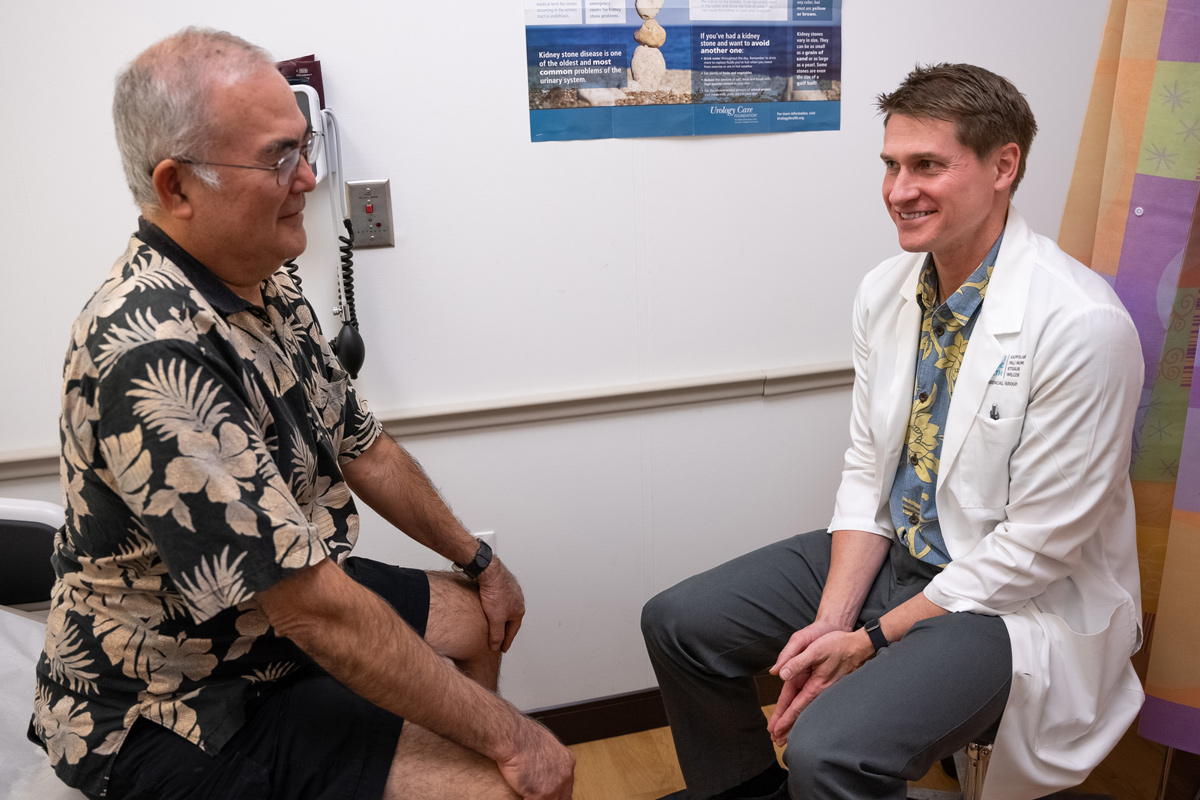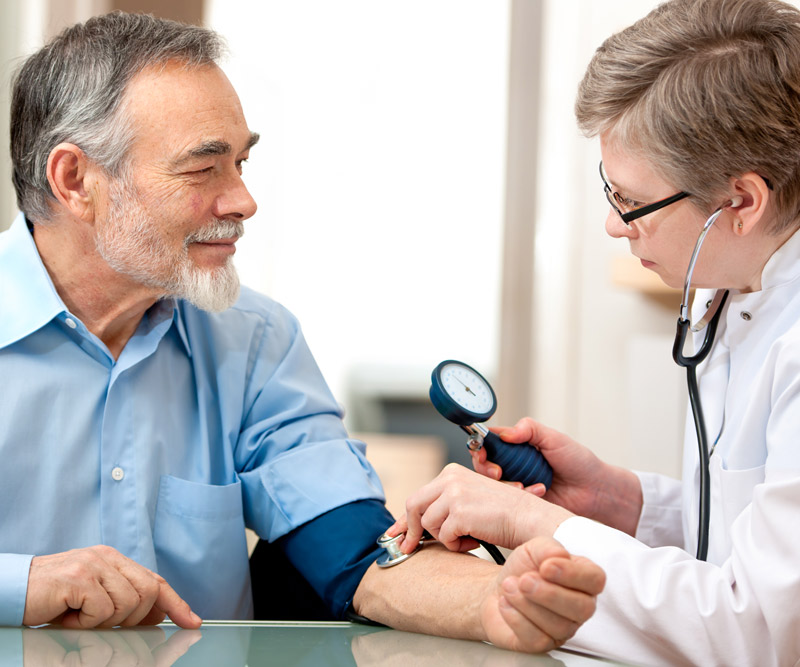
New Therapy Targets Prostate Cancer
Dr. Thomas Sanford grew up in Kamuela on Hawaii Island and graduated from the University of Hawaii at Manoa's John A. Burns School of Medicine.
Although he went on to study on the mainland – he completed a residency in urology and an internship in general surgery in San Francisco, finished a urologic oncology fellowship at the National Cancer Institute in Maryland, and worked as an assistant professor at The State University of New York Upstate Medical University – he always imagined coming home to practice.
"I learned a lot from my time training at academic medical centers on the mainland and I’m happy to bring those skills back to treat the community I grew up in," he says.
As a urologist, he specializes in conditions affecting the urinary tract, as well as conditions affecting the male reproductive system – including the prostate.
According to health data, prostate cancer is the most common cancer for men in Hawaii and the second-leading cause of cancer death, after lung and bronchus cancer.
Sanford is the first doctor in the state to perform focal therapy utilizing irreversible electroporation, which is a new minimally invasive procedure to treat prostate cancer.
What is focal therapy and how does it work?
The purpose of focal therapy is to treat just the cancerous areas of the prostate without affecting other areas. This is a departure from traditional treatments, which treated the entire prostate either by surgically removing it or delivering radiation to the prostate. Most types of focal therapy involve very targeted thermal technology, such as freezing (cryotherapy) or heating (lasers, high-intensity focused ultrasound).
The new focal therapy treatment at Pali Momi Medical Center uses a technology known as irreversible electroporation. It is nonthermal, meaning tissue is not heated or frozen. Irreversible electroporation uses probes to send pulses of electricity directly to the portion of the prostate that contains cancerous cells without compromising nearby normal structures, such as blood vessels or connective tissues.
What are the benefits and risks of focal therapy?
Traditional treatments are associated with more significant urinary and sexual side effects. With irreversible electroporation, the rates of side effects are lower. It’s very gratifying that we can offer this state-of-the-art prostate cancer treatment at Pali Momi, as it minimizes disruptions to a patient's normal life.
The primary risk is recurrence of cancer. Over time, the cancer can develop in areas of the prostate that have not been treated, requiring further treatment. For this reason, it's very important to ensure that patients meet certain criteria for focal therapy.
How long does it take patients to recover?
Patients will need a catheter for a week and need to avoid strenuous activity for a few weeks following the procedure. There is also a small possibility of changes in urinary or sexual function.
Are some populations at higher risk for prostate cancer?
Older men are at higher risk for prostate cancer, as are men who have been exposed to specific chemicals, such as Agent Orange. Patients with a close relative who has had prostate cancer are also at higher risk.
Prostate cancer has a wide range of disease severity. Some prostate cancers are aggressive and need more aggressive treatment whereas many are indolent, meaning the cancer grows slowly, and can either be observed or treated with milder treatment.
What are some symptoms of prostate cancer? When is it time to see a doctor?
If men begin to have difficulty urinating as they age, it is a good time to see a doctor about it. But you don't have to wait until then. Men in good health between the ages of 50 and 70 can be checked even before symptoms develop to prevent problems.
Many diseases, including prostate cancer, have factors you can't control, such as age and genetics. But there are also things you can control, including your diet and lifestyle. Exercise regularly. Eat more fruits and vegetables, focus on healthy fats and limit your alcohol intake. The basics go a long way.
This article was first featured in the April 24, 2024, issue of MidWeek as a part of the "Dr. in the House" series. See the full publication here.
Published on: April 25, 2024




